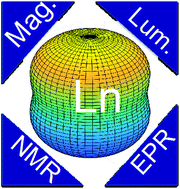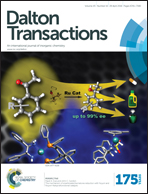Electromagnetic susceptibility anisotropy and its importance for paramagnetic NMR and optical spectroscopy in lanthanide coordination chemistry
Abstract
The importance of the directional dependence of magnetic susceptibility in magnetic resonance and of electric susceptibility in the optical spectroscopy of lanthanide coordination complexes is assessed. A body of more reliable shift, relaxation and optical emission data is emerging for well-defined isostructural series of complexes, allowing detailed comparative analyses to be undertaken. Such work is highlighting the limitations of the current NMR shift and relaxation theories, as well as emphasising the absence of a compelling theoretical framework to explain optical emission phenomena.



 Please wait while we load your content...
Please wait while we load your content...